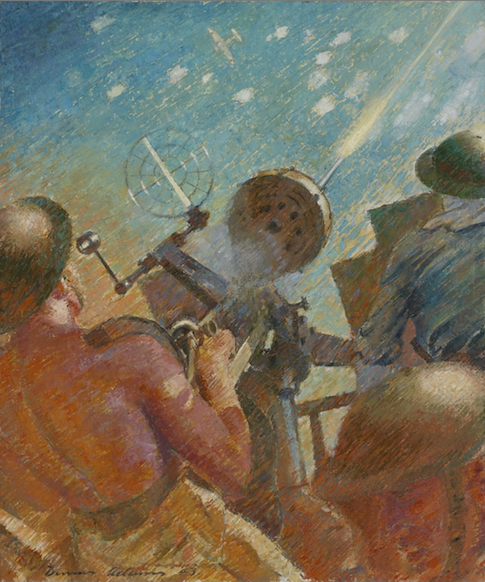Long before he was doing battle with thin-lipped, bloodless English villains of questionable virility in films like The Patriot and Braveheart, a more youthful Mel Gibson was starting his career in an 1981 Australian film, directed by Peter Weir, called Gallipoli. Set during a World War One campaign against the Turks that has never been famous in America, the movie depicted brave, corn-fed (or whatever the outback version of ‘corn-fed’ is) strapping young Australian lads, like Gibson and his mates, being callously sent to their deaths in a hail of Ottoman machine gun fire by… thin-lipped, bloodless English officers, who seemed to consider the interruption of their tea-time by reports of the Aussie death rates to be a substantial imposition.
The theme obviously stuck, and though Gibson may have overdone it later in his career (it's not the only animus he’s overdone) the anti-elitism of Gibson’s movies obviously hit a box-office nerve in the United States. In fact, there is a case to be made that America’s real special relationship is not with the Brits—who welched out on us in Vietnam, after all—but with the Aussies, another transplanted (or, in certain regrettable cases, transported) bunch of colonials who constitute the only nation to have sent troops to serve alongside Americans in every war of the 20th and 21st centuries.
I argue this not only because of a personal connection—my mother, Sydney-raised, was imported to the USA as a consequence of her marriage to an American Army officer whom she met while serving as a civilian in Saigon—but also because the two country’s natural qualities share a great deal of overlap. There are differences, though. Perhaps as a consequence of never having had their own revolution, the Aussies have a chip on their shoulders that Americans generally do not.
Nowhere is this clearer than in the fact that Australia’s national holiday commemorating the military—the Aussies, like Americans, hold their veterans in high regard—coincides with the landing at Gallipoli on April 25, 1915. And Gallipoli, planned and led by the British (indeed, by Churchill himself) but fought in the trenches by large numbers of imperial subjects, was a costly and strategically pointless defeat. There were English troops there, too, but this tends to get left out in the Australian telling of the story.
This year marking the centenary of the landing, the Australian Embassy in Washington is celebrating with an exhibit of official Australian war art. It is well worth a visit, especially if you are interested in Australia, war, or art. Or solitude. Though it is open to the public, no one seems to know that the exhibit exists. When I arrived, the staff seemed genuinely surprised to see me.
For government-sponsored art—almost everything in the room was done at the hands of artists either employed by or serving in the Australian military—there is remarkably little cant or propaganda. There are one or two treacly exceptions (like Stella Bowen’s hagiographic group portrait of a Halifax bomber crew) but in general the paintings, which cover a period from World War One to the present, tend toward a clear-eyed approach.
This art served diverse original purposes, including topographic representations for planning military operations—some of the earlier works from Gallipoli were the satellite photos of their day. Others seem to have been made with the purpose of communicating the experience of the wars to the Australian public and of preserving it for the future.
These visual representations of wartime experience can exhibit humor, but more often they are grim. Alan Moore’s depiction of a Nazi concentration camps, or of the day a V-2 hit the Smithfield Market in London, killing 110 when the floor of the place fell out and many victims dropped into the railway below, stand out in this regard. Paintings of combat patrols from the Pacific theater of World War Two through to Vietnam communicate a visceral sense of fatigue and a sense that nature might be as great an enemy as the Japanese or the Viet-Cong.
Combat can produce moments of overwhelming pyrotechnic majesty—majestic, that is, until you're the one on the business end of the pyrotechnics—and this phenomenon gets its moment in Dennis Adams’ Dive bombers attacking, fire from an Oerlikon from 1943. There is a great deal of technical virtuosity in this exhibit, not to mention modernist energy. Adams’ painting achieves its striking effect by putting the viewer in a crouch behind the gunner, staring up on an off-kilter diagonal to see streaks of fire and the explosions of anti-air fire, and a Japanese bomber hurtling through it all. An Italian Futurist could have produced something like this.
The more recent efforts in the exhibit, from Australia’s deployments to the War on Terror and peacekeeping operations around the Pacific, seem especially concerned with technology, both as a medium and as an aspect of war.
This concern can manifest itself in experiments that don’t seem particularly successful, such as Jon Cattapan’s series of ‘Night vision studies.’ And while technology is an interesting theme for a painter, for obvious reasons, here the inclusion of seemingly random dots and lines superimposed over images that vaguely resemble what one sees through a set of NVGs leaves the viewer more confused than edified.
But perhaps that’s the point. Artists are always challenging us these days. When will they accept our surrender?
